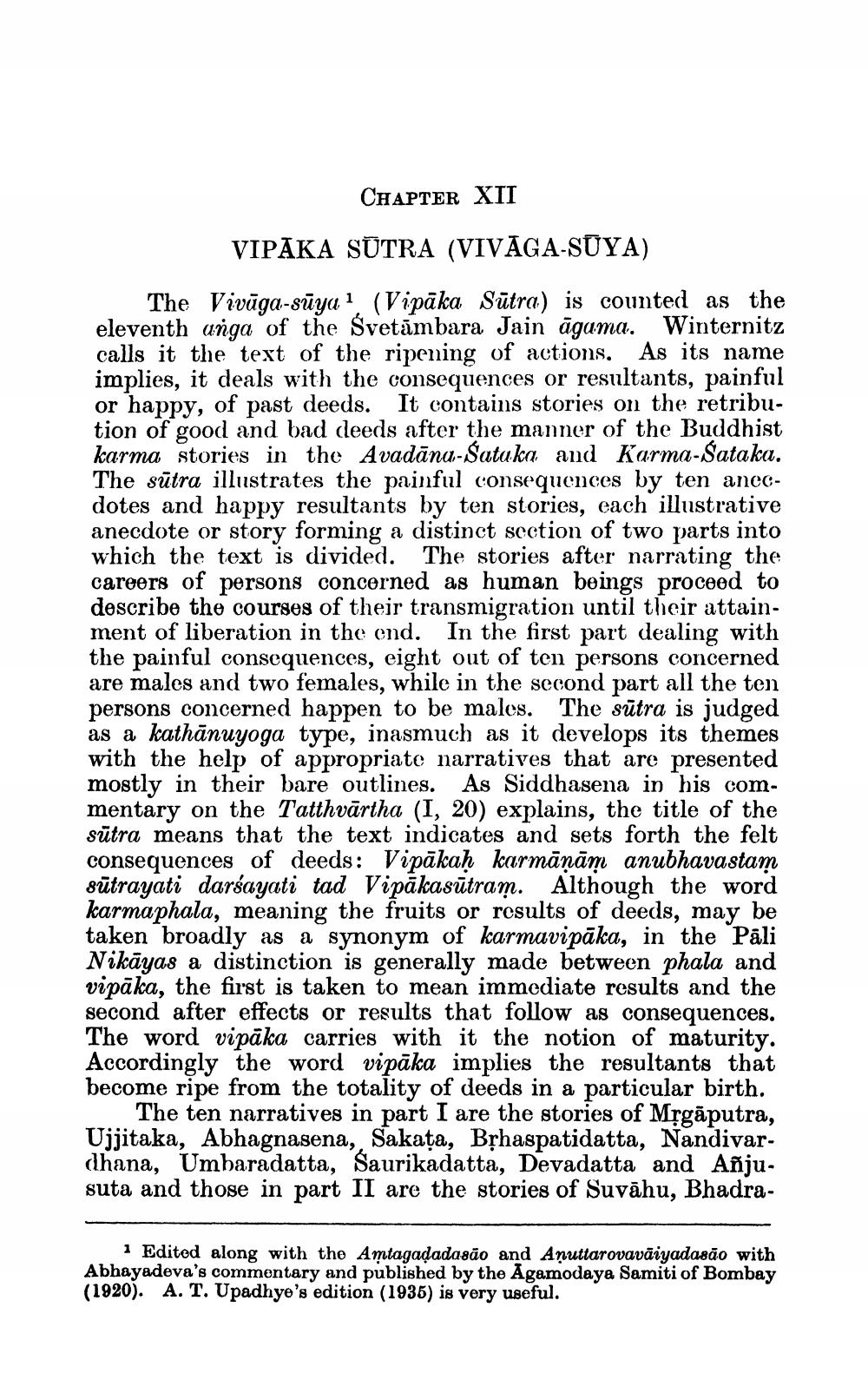________________
CHAPTER XII
VIPĀKA SŪTRA (VIVĀGA-SŪYA)
1
The Vivuga-suya 1 (Vipāka Sutra) is counted as the eleventh anga of the Svetambara Jain agama. Winternitz calls it the text of the ripening of actions. As its name implies, it deals with the consequences or resultants, painful or happy, of past deeds. It contains stories on the retribution of good and bad deeds after the manner of the Buddhist karma stories in the Avadana-Sataka and Karma-Sataka. The sutra illustrates the painful consequences by ten anecdotes and happy resultants by ten stories, each illustrative anecdote or story forming a distinct section of two parts into which the text is divided. The stories after narrating the careers of persons concerned as human beings proceed to describe the courses of their transmigration until their attainment of liberation in the end. In the first part dealing with the painful consequences, eight out of ten persons concerned are males and two females, while in the second part all the ten persons concerned happen to be males. The sutra is judged as a kathānuyoga type, inasmuch as it develops its themes with the help of appropriate narratives that are presented mostly in their bare outlines. As Siddhasena in his commentary on the Tatthvartha (I, 20) explains, the title of the sutra means that the text indicates and sets forth the felt consequences of deeds: Vipakaḥ karmāņām anubhavastam sutrayati darśayati tad Vipakasūtram. Although the word karmaphala, meaning the fruits or results of deeds, may be taken broadly as a synonym of karmavipāka, in the Pali Nikayas a distinction is generally made between phala and vipaka, the first is taken to mean immediate results and the second after effects or results that follow as consequences. The word vipaka carries with it the notion of maturity. Accordingly the word vipaka implies the resultants that become ripe from the totality of deeds in a particular birth.
The ten narratives in part I are the stories of Mrgaputra, Ujjitaka, Abhagnasena,, Sakata, Bṛhaspatidatta, Nandivardhana, Umbaradatta, Saurikadatta, Devadatta and Añjusuta and those in part II are the stories of Suvahu, Bhadra
1 Edited along with the Amtagaḍadasão and Anuttarovavaiyadasão with Abhayadeva's commentary and published by the Agamodaya Samiti of Bombay (1920). A. T. Upadhye's edition (1935) is very useful.




